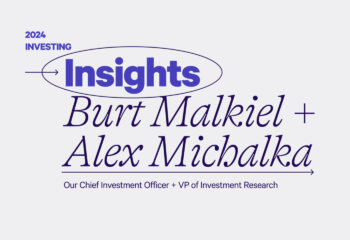Editor’s note: Interested in learning more about equity compensation, the best time to exercise options, and the right company stock selling strategies? Read our Guide to Equity & IPOs
The New York Times Bits blog writer Quentin Hardy recently interviewed Wealthfront CEO Andy Rachleff on the question of how many people – regular people, not executives – become millionaires after a typical tech IPO.
Andy’s estimate is that tech IPOs will create about 12,000 millionaires in the next few years.
Andy, also a co-founder of Benchmark Capital, helped Quentin do a back-of-the envelope calculation. Here’s how that math works (What follows is a paraphrase from Quentin’s post).
Including Facebook, the aggregate market value of the companies likely to go public in the next few years could be around $500 billion. Working backwards from that number, we can estimate the aggregate revenues of the companies at about $50 billion, because we know that many young and high-growth companies trade at 10 times revenue. If we back the $50 billion estimate down to $40 billion, and apply an average revenue per employee of $500,000, then we come up with 80,000 employees.
Based on the typical size of options packages offered at various stages of maturity of private tech companies, about 15% of the employees at a successful tech IPO walk away as paper millionaires. (IPO millionaires are usually the earliest employees at a company or recruited executives.)
Hence, the 12,000 figure.
(Taxes, of course, take a big and growing bite.)
Quentin wrote that, while the billionaire executives grab the headlines, “the greater effect on the economy may well come from the riches that hit the rank and file.”
The rank and file millionaires help drive the economy in two ways. First, there are greater numbers of them – and their spending habits in general, not to mention money spent on houses, cars and fancy school tuitions, filter through the economy.
The wide distribution of money is important, too. People who believe they can become rich are more likely to take risks and innovate, and companies that are full of those kinds of people are more likely to succeed. Those companies power a successful economy: The Bay Area’s gross domestic product in 2010 reached $535 billion, making it the 19th largest economy in the world, according to the Bay Area Council’s Economic Institute.
Here’s one final note. As powerful an economic engine as the tech industry is, the federal government may be surpassing it. The median per capita income in the Washington, D.C., metro area, $84,523, is now higher than the median per capita income in the San Jose metro area, $83,944. The average federal employee earns $126,369, including benefits.
What does that say about the role the government plays in the U.S. economy?
About the author(s)
Journalist Elizabeth MacBride is Wealthfront's editor. Her work has appeared in Crain's New York, Advertising Age, the Washington Post and the Christian Science Monitor, among other publications. View all posts by Elizabeth MacBride



